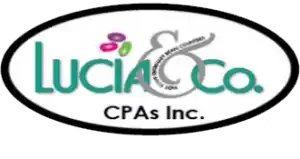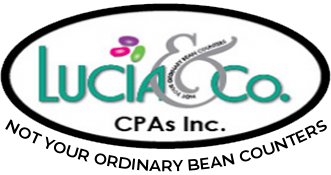Main Takeaways:
- Cash flow forecasting predicts inflows and outflows, ensuring enough funds to cover obligations.
- Forecasting differs from budgeting by focusing on timing of cash movements.
- Key components include sales projections, receivables, expenses, capital, financing, and taxes.
- Businesses can use direct (short-term) or indirect (long-term) forecasting methods.
- Technology like QuickBooks, Xero, and dedicated tools makes forecasting more accurate and efficient.
- Regular updates and scenario planning help manage risks and economic uncertainty.
- Partnering with accountants like Lucia & Co. CPAs enhances accuracy and strategic decision-making.
Running a successful business requires more than generating sales and paying bills. One of the most critical parts of financial management is Cash Flow Forecasting. Understanding how money moves in and out of your business gives you the ability to plan ahead, manage risks, and take advantage of opportunities before your competitors do.
Many business owners focus heavily on profits but forget that cash flow is what keeps a company alive. Profits may look great on paper, but if you do not have enough cash to cover payroll, rent, or supplier costs, operations can quickly stall. This is why a strong forecast is not just an accounting task but a strategic tool that supports long-term stability and growth.
What Is Cash Flow Forecasting?
At its core, Cash Flow Forecasting is the process of estimating the money your business expects to receive and spend over a future period of time. Typically, forecasts are prepared for weekly, monthly, quarterly, or annual intervals.
A forecast includes:
- Cash inflows: Sales revenue, customer payments, investment income, loans, and other money coming in.
- Cash outflows: Payroll, rent, loan repayments, supplier invoices, utilities, taxes, and other business expenses.
The goal is to provide a clear picture of whether you will have enough cash available to cover obligations. By anticipating surpluses or shortfalls, business owners can make better decisions about borrowing, investments, and cost management.
Why Cash Flow Forecasting Matters
Without accurate forecasting, businesses are left guessing when major expenses hit or when customers delay payments. A well-prepared forecast helps you:
- Avoid liquidity problems by predicting when funds might run low.
- Plan for growth by knowing when you can reinvest in equipment, staff, or marketing.
- Negotiate better with banks since lenders prefer businesses that understand their cash positions.
- Protect against surprises such as seasonal downturns or unexpected repairs.
- Improve decision-making because financial clarity gives confidence in strategic choices.
In short, forecasting transforms cash flow management from reactive to proactive.
The Difference Between Cash Flow Forecasting and Budgeting
While many business owners think budgeting and cash flow forecasting are the same, they serve different purposes.
- Budgeting focuses on estimating revenues and expenses over a set period, showing profit expectations.
- Cash Flow Forecasting centers on actual cash movements—when money will be received and when it will be paid out.
For example, you might budget a $10,000 sale for January, but if the customer does not pay until March, the forecast will reveal a gap that the budget does not. Both tools are valuable, but only a forecast provides the timing accuracy needed for cash management.
Key Components of an Effective Forecast
An accurate forecast requires more than a simple guess. Essential components include:
- Sales Projections – Anticipating customer demand, considering seasonality, and reviewing past sales data.
- Receivables Timing – Understanding how long customers typically take to pay invoices.
- Operating Expenses – Fixed costs such as rent and utilities, plus variable costs tied to sales levels.
- Capital Expenditures – Planned investments in equipment, technology, or facilities.
- Financing Activities – Loan repayments, interest, or new borrowings.
- Taxes and Compliance – Planning for quarterly or annual tax payments to avoid surprises.
The accuracy of your forecast depends on how well you track these details.
Methods of Cash Flow Forecasting
Businesses can choose between two primary methods depending on their needs:
1. Direct Method
The direct method tracks actual cash transactions such as receipts from customers and payments to suppliers. It provides a short-term, highly detailed view of cash flow.
2. Indirect Method
The indirect method starts with net income and adjusts for non-cash transactions, changes in accounts receivable, inventory, and payables. This approach works best for medium- to long-term forecasting.
Some businesses use a combination of both to get the clearest picture possible.
Tools and Technology for Forecasting
Gone are the days when forecasting was only done in spreadsheets. Today, businesses have access to powerful accounting software and cloud-based platforms that integrate with bank feeds, invoices, and payment systems.
Popular tools include:
- QuickBooks and Xero – Widely used accounting platforms that offer built-in forecasting reports.
- Dedicated forecasting software like Float, Futrli, or Spotlight Reporting for more advanced analysis.
- ERP systems for larger organizations with complex financial structures.
Technology helps automate repetitive tasks, reduce errors, and allow real-time updates, making forecasting more accurate and less time-consuming.
Short-Term vs. Long-Term Cash Flow Forecasting
Forecasting can be broken down into short- and long-term views:
- Short-term forecasting (1–12 weeks): Helps manage daily operations, ensuring payroll, rent, and supplier payments are covered.
- Medium-term forecasting (3–12 months): Allows businesses to plan for seasonal fluctuations and upcoming expenses.
- Long-term forecasting (1–5 years): Supports strategic decisions like expanding into new markets, purchasing property, or restructuring debt.
Each level serves a different purpose, but together they give a full picture of financial health.
Common Challenges in Cash Flow Forecasting
Even with the best tools, forecasting has challenges. Some of the most common include:
- Inaccurate data entry that skews results.
- Overly optimistic sales estimates that inflate cash inflows.
- Unpredictable customer payments leading to gaps between forecasts and reality.
- Unexpected expenses like equipment failure or legal issues.
- Ignoring seasonality which can lead to overconfidence during peak months.
Recognizing these pitfalls helps businesses refine their forecasting models over time.
How Forecasting Supports Strategic Planning
Forecasting is not just about survival—it’s also a tool for growth. Businesses that forecast regularly can:
- Plan for expansion knowing when surplus funds will be available.
- Hire strategically without worrying about payroll interruptions.
- Invest in marketing during periods of projected stability.
- Improve supplier negotiations by timing purchases when cash levels are strongest.
A company that understands its cash position is better equipped to make bold moves while minimizing risks.
Industry-Specific Considerations
Different industries face unique cash flow challenges:
- Construction companies deal with long payment cycles and heavy upfront material costs.
- Retailers must manage inventory spikes around holiday seasons.
- Professional service firms often wait months for client invoices to be paid.
- Manufacturers balance raw material costs with customer demand forecasts.
Tailoring your forecast to industry dynamics ensures it reflects real-world conditions.
The Role of Accountants and Financial Advisors
While business owners can create their own forecasts, working with a CPA or financial advisor improves accuracy and strategy. Accountants bring expertise in:
- Evaluating historical data and trends.
- Adjusting forecasts for tax planning.
- Identifying risks and opportunities.
- Advising on financing solutions to bridge cash gaps.
Partnering with professionals ensures that forecasts are not just numbers but actionable business tools.
Best Practices for Successful Forecasting
To maximize the effectiveness of cash flow forecasting, businesses should follow best practices such as:
- Update forecasts regularly to reflect changes in sales, expenses, or economic conditions.
- Use realistic assumptions instead of overly optimistic numbers.
- Factor in contingencies for emergencies or downturns.
- Compare forecasts with actual results to refine accuracy over time.
- Involve multiple departments such as sales, operations, and finance for well-rounded inputs.
Consistency is the key to reliable forecasting.
Cash Flow Forecasting in Times of Economic Uncertainty
During economic downturns, forecasting becomes even more valuable. The ability to model different scenarios—such as reduced sales, higher interest rates, or supply chain disruptions—helps businesses prepare for uncertainty.
Scenario planning allows decision-makers to ask: What happens if revenue drops by 20%? What if supplier costs double? By simulating these situations, businesses can prepare backup plans before problems occur.
How Forecasting Impacts Investors and Lenders
Investors and banks look closely at a company’s ability to manage cash. A detailed forecast provides evidence of financial discipline, making it easier to secure funding. Lenders especially value accurate projections because it reduces their risk of default.
Businesses that can demonstrate strong forecasting practices often gain access to better loan terms, higher credit limits, and improved investor confidence.
Turning Forecasts Into Action
Forecasting should not sit unused in a spreadsheet. Once a forecast is prepared, business leaders must take action:
- Adjust spending if a shortfall is predicted.
- Speed up collections from clients.
- Delay non-essential purchases during tight months.
- Schedule investments for times when cash levels are strong.
The real value of a forecast comes from using it as a decision-making guide.
Cash Flow Forecasting as a Competitive Advantage
Many businesses overlook forecasting, assuming it is only for large corporations. In reality, even small businesses gain a competitive edge when they forecast consistently. Having clarity on future cash positions means you can act faster, seize opportunities, and avoid costly mistakes that competitors might fall into.
Partnering with Lucia & Co. CPAs, Inc.
Mastering Cash Flow Forecasting is not just about tracking numbers—it’s about securing the future of your business. Whether you’re a small business owner or managing a growing enterprise, the guidance of an experienced accounting team can make the difference between surviving and thriving.
At Lucia & Co. CPAs, Inc., we specialize in helping businesses build accurate forecasts, plan strategically, and strengthen their financial foundations. Our team combines accounting expertise with practical business insight, giving you the clarity and confidence you need to make smarter decisions.
Contact Lucia & Co. CPAs, Inc. today and let us help you take control of your cash flow so your business can achieve lasting stability and growth.




